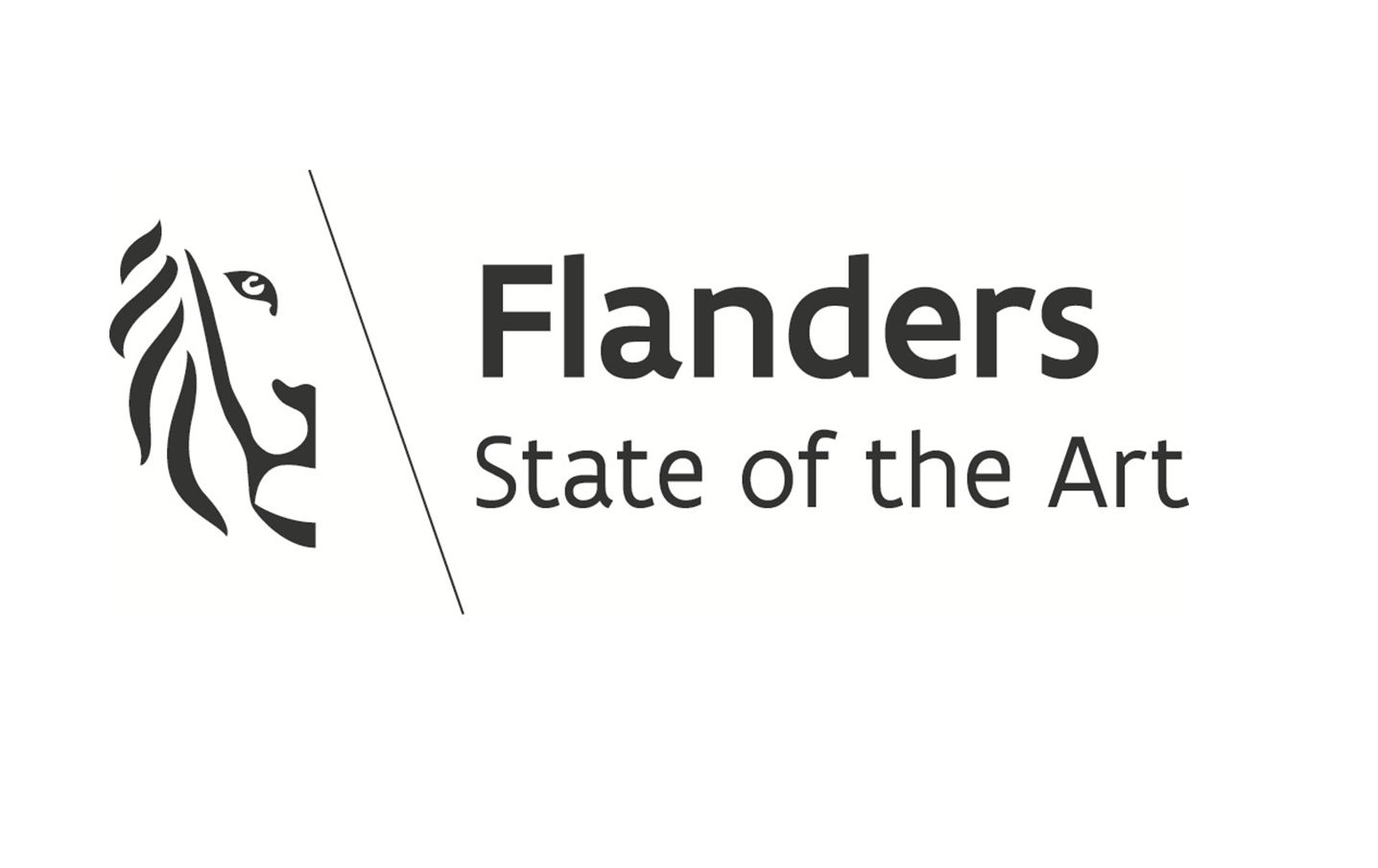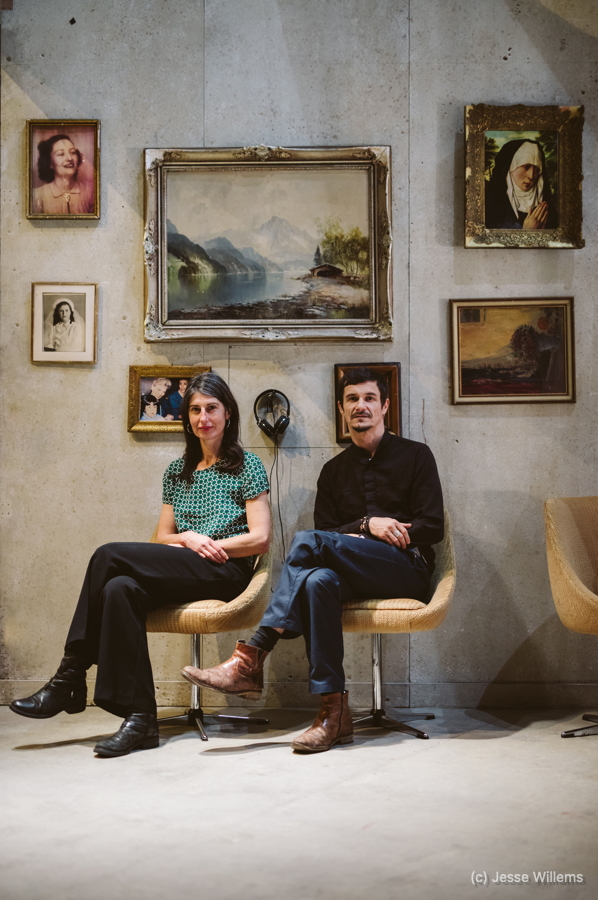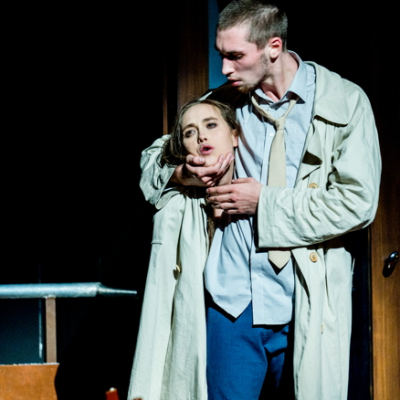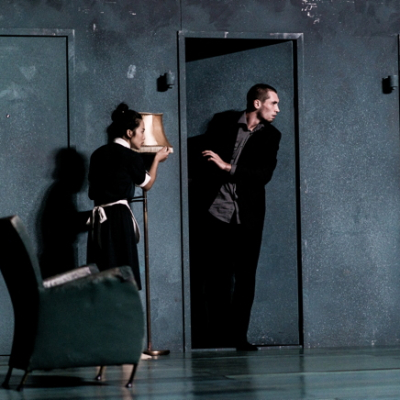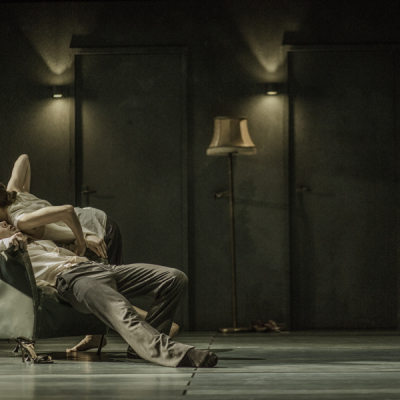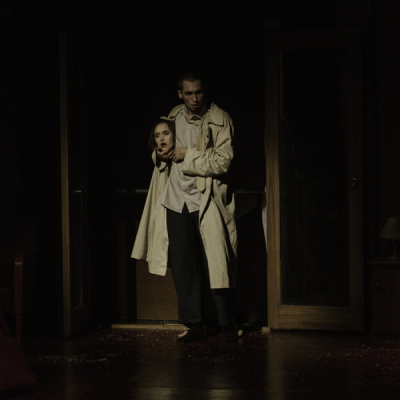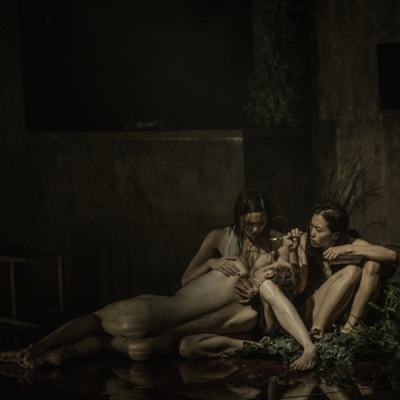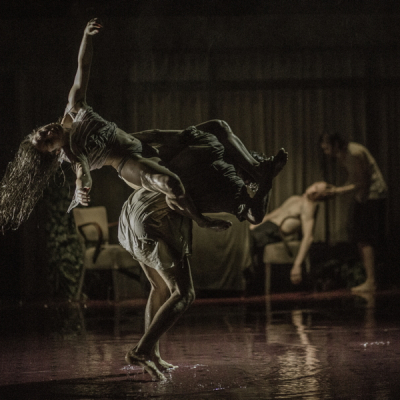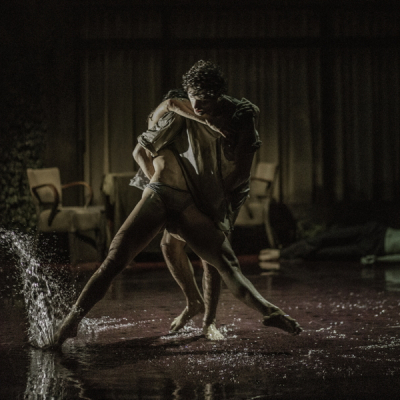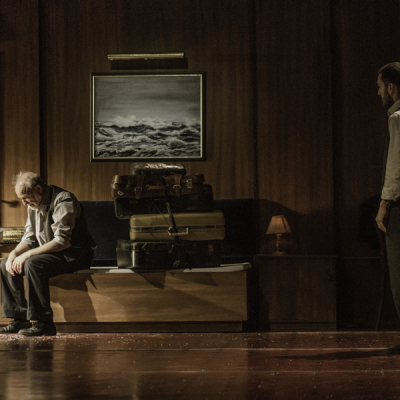Triptych: The missing door, The lost room and The hidden floor 14
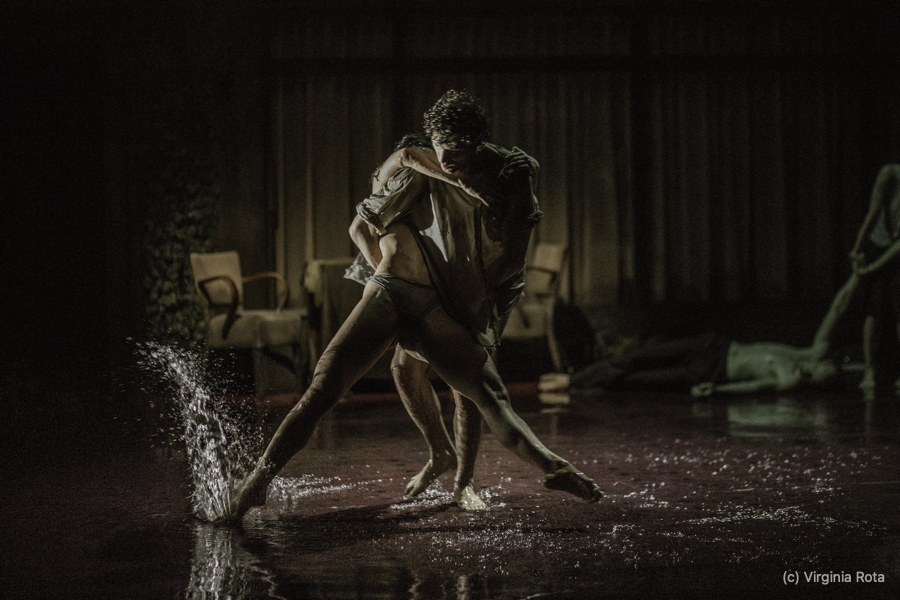
Peeping Tom, Brussel, Belgium
Director: Gabriella Carrizo, Franck Chartier
without text
2 hours 5 minutes with 1 breaks.
In Triptych: The missing door, The lost room and The hidden floor, several characters are evolving in spaces from which they cannot escape. They set out to seek an ideal, they left with a dream and with hope. Now, they keep wandering throughout a mysterious and macabre labyrinth in which they are lost. The characters live between reality and what’s imagined, guided by natural forces that lead them to an uncertain destiny. Each part of the trilogy has its own unique setting and evokes a film set. The missing door is set in a room or hallway filled with doors that won’t open. The action in The lost room happens in a cabin on a ship, focusing on the interior world of the characters. The hidden floor takes place in the public setting of an abandoned restaurant, where natural forces have taken over. The scenic changes between the piece are carried out in plain sight and become a part of the performance, as if it were a live film editing.
Dancers
Konan Dayot
Fons Dhossche
Lauren Langlois
Panos Malactos
Alejandro Moya
Fanny Sage
Eliana Stragapede
Wan-Lun Yu
Stage designer: Gabriela Carrizo, Justine Bougerol
Costume designer: Seoljin Kim, Yi-chun Liu, Louis-Clément Da Costa
Composer: Raphaëlle Latini, Ismaël Colombani, Annalena Fröhlich, Louis-Clément Da Costa, Eurudike De Beul
Sound dramaturge: Raphaëlle Latini
Artistic assistance: Thomas Michaux,
Light design: Tom Visser
Technical coordination: Giuliana Rienzi
Technical engineers: Bram Geldhof, Ilias Johri (lights), Jonas Castelijns (sound)
Stage management: Thomas Dobruszkes (stage manager), Clement Michaux, Kato Stevens (stage assistants)
Production interns: Lisa Gunstone, Robin Appels Based upon Adrift, created with the dancers of NDT I: Chloe Albaret, Lydia Bustinduy, César Faria Fernandes, Fernando Hernando Magadan/Spencer Dickhaus, Anna Hermann, Anne Jung, Marne Van Opstal, Roger van der Poel, Meng-ke Wu, Ema Yuasa/Rena Narumi, with artistic assistance by Louis-Clément Da Costa, Seoljin Kim and Yi-Chun Liu
Collaborating partner: the Belgian Embassy in Hungary, Representation in Flanders.
